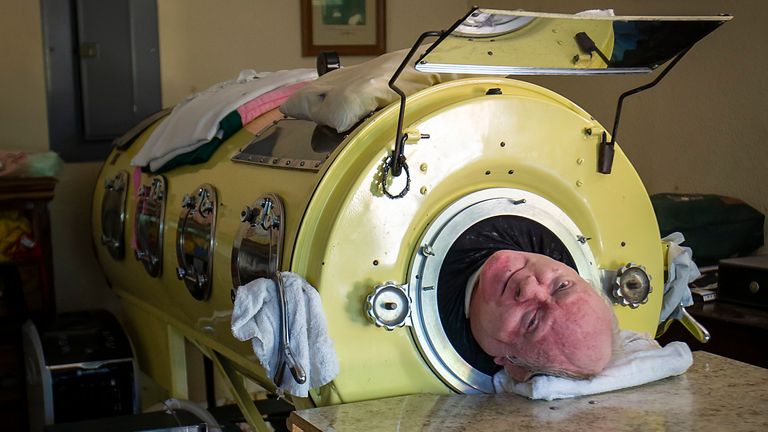At the age of six in 1952, Paul Alexander developed polio, which left him paralyzed from the neck down.
Due to the illness, he was unable to breathe on his own, so the doctors decided to put him in the metal cylinder, where he would die.
He would go on to publish a memoir, obtain a law degree, and practice law.
A message on a fundraising website claimed, “Paul Alexander, ‘The Man in the Iron Lung,’ passed away yesterday.”
Paul attended college, graduated, and started a career as a published author during this time.
“Paul was an incredible role model.”
His brother Phillip Alexander described him as a “big smile” that immediately made people feel comfortable and as a “welcoming, warm person.”
a brother to me. We had arguments, played, fell in love, partied, and attended concerts together—he was just a typical sibling, and I never gave it much attention,” he said to the BBC.
Phillip expressed admiration for his brother’s independence despite his condition, which prevented him from carrying out regular activities like feeding himself.
“He was the master of his domain, helping people to help him,” Phillip continued.
In the last several weeks, Paul’s condition worsened, and the brothers bonded over pints of ice cream during his last days.
“It was an honour to be with him in his last moments,” Phillip remarked.
When he was ill in 1952, Dallas, his hometown, doctors performed surgery on him, sparing his life. However, polio meant
His body could no longer sustain itself through breathing.
The solution was to put him in an iron lung, which is a metal cylinder that surrounds his body up to his neck.
He referred to his lung as his “old iron horse” because it gave him breathing ability. Bellows forced his lungs to expand and take in air by sucking the air out of the cylinder. His lungs deflated as the air was released because the same mechanism worked in reverse.
Years passed before Alexander finally mastered independent breathing, enabling him to briefly exit the lung.
He was not anticipated to live long, like the majority of polio survivors who were given iron lungs. However, he survived for many years after the development of
In the 1950s, the polio vaccine virtually wiped out the disease in the West. After completing his high school education, he enrolled at Southern Methodist University. He graduated from the University of Texas in Austin with a law degree in 1984. He spent two years practicing law after being admitted to the bar.
In 2020, he said to the Guardian, “I knew if I was going to do anything with my life, it was going to have to be a mental thing.”
He reportedly took eight years to write the memoir, which he released that year, using a plastic stick to type on a keyboard and dictating to a buddy.
Phillip, Paul’s brother, stated that it was following It was only after it was published that he realized how much his brother had inspired people all across the world.
By the 1960s, ventilators had rendered iron lungs unnecessary due to medical advancements. However, Alexander claimed he was accustomed to living in the cylinder and continued to do so.
He was officially recognized as the longest-living individual with an iron lung by Guinness World Records.

